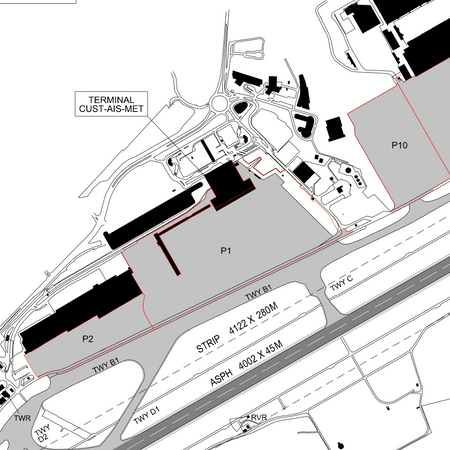
Apron performance improvements
Airport: Luxembourg Airport, Luxembourg (EU).
Client: lux-Airport, Aerodrome Operator.
The aerodrome operator was seeking apron management measures to minimize delay for arriving aircrafts in reaching their stands.
Arriving passenger aircrafts are routed to their stands by a Follow-Me. It’s the procedure. Firstly, because P1 is a tight and busy apron, therefore the aircraft need to be guided to the stand. Second, dense heavy fog i.e., low visibility conditions are frequent at the airport, thus the Low Visibility Procedures (LVP), are initiated quite often as well. Under the LVP, aircraftavail the Follow-Me service as part of LVP procedure.
After landing, the tower control routes the aircraft to one of the two waiting points at the
entry to the P1, the tightly run passenger apron at the airport with remote and contact stands. From there a Follow-Me vehicle routes the aircraft to itsstand.
During peak period, the aircraft arrival rate increases, often resulting in buildup of a small queue of aircrafts at the waiting point. P1 is also sees ground-traffic of freight vehicles from P5 the airport’s cargo apron, airside vehicles, and passenger buses. All combined, the apron gets quite busy.
After checking for whether current procedures that might be instigating the delay, the daily and seasonal flight data analysis followed, followed by estimating arrival rates of the aircraft. As the problem statement was unique to LUX, it required conceptualizing and creating a model tailor-made to the airport.
The model output optimizes the number of Follow-Me cars to achieve the desired objective of minimized waiting time for the arriving aircrafts. Recommendation included the number of follow-me by winter and summer airline schedules.
The model also projected the maximum number of Follow-Me vehicles, beyond which this service would impede on its own self, creating delays. The optimized values feed into contract decisions for the number of personnel required for this task, and by extension, budget decisions.
Image source: Geoportail
Project Gallery


